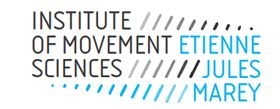
Projects
- Motion Integration and Segmentation
These projects study the visual processing by which local motion signals are integrated together if they belong to the same visual objects or are segmented from each other if they belong to different visual objects. Motion integration processing is investigated by looking at the effects of long-range interactions between different motion signals located at distant distances from each other in the visual scene. The barber-pole phenomenon is used to probe how various motion signals are integrated together, in order to derive a unique direction perception of the global grating-defined surface. The role of binocular (disparity) and monocular (half-occluded regions) depth cues is investigated. A strong attention is given to dynamical aspects of motion integration, as demonstrated by multi-stable perception. Motion segmentation is investigated using the motion transparency phenomenon. Two sheets of overlapping random dots, moving in the same direction but with different speeds give rise to the perception of two depth-ordered moving transparent surfaces. With psychophysical techniques, we measure the smallest difference in speed that enables motion segmentation, Speed tuning, temporal dynamics and spatial scale of motion segmentation are investigated.
- Heading perception during self-motion
Self-motion generates a continuous change in the visual image that has been described as an optic flow. This dynamic visual input is a rich source of information about the 3D layout of the environnement as well as about the direction or the speed of self-motion. We are investigating the effects of the structure of the environment upon heading perception during rectilinear and curvilinear self-motion. Using psychophysical techniques, we probe the human observers' ability to analyse the curvature of the displacement path. We are also interested in the role of gaze location in that ability, in order to understand where the observer optimally picks up the information within the flow field.
- Visual Factors in Road Safety
- Human Factors in Handicap and Rehabilitation
- Virtual Reality and behavior




